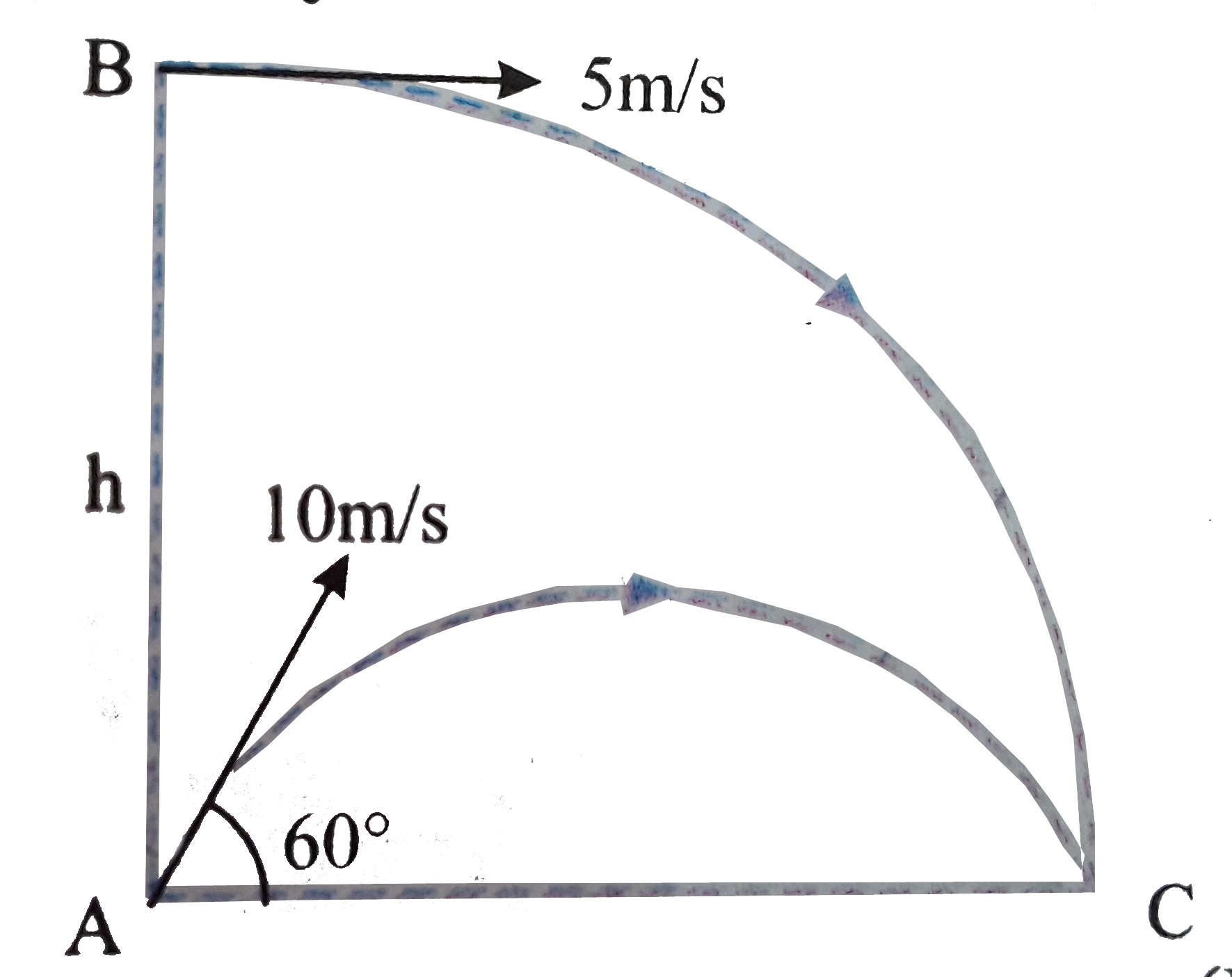With what velocity should a particle be projected so that its height becomes equal to radius of earth?
(GMR)1/2
(8GMR)1/2
(2GMR)1/2
(4GMR)1/2
The correct Answer is:A
To find the velocity with which a particle should be projected so that its height becomes equal to the radius of the Earth, we can use the principle of conservation of mechanical energy. Here's a step-by-step solution:
Step 1: Understand the Problem
We need to project a particle from the surface of the Earth such that it reaches a height equal to the radius of the Earth (R). Therefore, the total height (h) at which the particle will reach is:
h=R
The total distance from the center of the Earth to the particle at its maximum height will be:
d=R+h=R+R=2R
Step 2: Apply Conservation of Mechanical Energy
The mechanical energy conservation states that the initial potential energy plus the initial kinetic energy equals the final potential energy plus the final kinetic energy:
Ui+Ki=Uf+Kf
Step 3: Calculate Initial and Final Energies
1. Initial Potential Energy (U_i):
The gravitational potential energy when the particle is on the surface of the Earth is given by:
Ui=−GMmR
where G is the gravitational constant, M is the mass of the Earth, and m is the mass of the particle.
2. Initial Kinetic Energy (K_i):
The initial kinetic energy when the particle is projected with velocity v is:
Ki=12mv2
3. Final Potential Energy (U_f):
At the maximum height (2R), the potential energy is:
Uf=−GMm2R
4. Final Kinetic Energy (K_f):
At the maximum height, the kinetic energy is zero because the particle momentarily stops before falling back:
Kf=0
Step 4: Set Up the Equation
Substituting the energies into the conservation of energy equation:
−GMmR+12mv2=−GMm2R+0
Step 5: Simplify the Equation
Rearranging gives:
12mv2=−GMm2R+GMmR
12mv2=GMm2R
Step 6: Solve for Velocity (v)
Now, we can cancel m from both sides (assuming m≠0):
12v2=GM2R
Multiplying both sides by 2:
v2=GMR
Taking the square root:
v=√GMR
Conclusion
The required velocity v with which the particle should be projected is:
v=√GMR
We need to project a particle from the surface of the Earth such that it reaches a height equal to the radius of the Earth (R). Therefore, the total height (h) at which the particle will reach is:
h=R
The total distance from the center of the Earth to the particle at its maximum height will be:
d=R+h=R+R=2R
The mechanical energy conservation states that the initial potential energy plus the initial kinetic energy equals the final potential energy plus the final kinetic energy:
Ui+Ki=Uf+Kf
1. Initial Potential Energy (U_i):
The gravitational potential energy when the particle is on the surface of the Earth is given by:
Ui=−GMmR
where G is the gravitational constant, M is the mass of the Earth, and m is the mass of the particle.
The initial kinetic energy when the particle is projected with velocity v is:
Ki=12mv2
At the maximum height (2R), the potential energy is:
Uf=−GMm2R
At the maximum height, the kinetic energy is zero because the particle momentarily stops before falling back:
Kf=0
Substituting the energies into the conservation of energy equation:
−GMmR+12mv2=−GMm2R+0
Rearranging gives:
12mv2=−GMm2R+GMmR
12mv2=GMm2R
Now, we can cancel m from both sides (assuming m≠0):
12v2=GM2R
Multiplying both sides by 2:
v2=GMR
Taking the square root:
v=√GMR
The required velocity v with which the particle should be projected is:
v=√GMR
Similar Questions
With what velocity should a particle be projected so that its maximum height attained becomes equal to radius of earth ?
View SolutionWith what minimum velocity v should a particle be thrown horizontally from a height h above the surface of the earth of mass M so that it does not fall back on the earth ? Radius of earth is R ?
View SolutionWith what velocity a body of mass m be projected vertically upwards so that it may be able to reach a height nR above earth's surface
View Solutionwhat should be the velocity of an electron so that its momentum becomes equal to that of a photon of wavelength 5200Å
View SolutionA satellite is to revolve round the earth in as circle of radius 8000 km. With what speed should this satellite be projected into orbit? What will be the time period?
Take g at the surface =9.8ms−2 and radius of the earth =6400 km.
View SolutionA particle A is projected from the ground with an initial velocity of 10m/s at an angle of 60∘ with horizontal. From what height should an another particle B be projected horizontally with velocity 5m/s so that both the particles collide in ground at point C if both are projected simultaneously g=10m/s2.

View SolutionA particle is projected from ground at some angle with the horizontal. Let P be the point at maximum height H. At what height above the point P should the particle be aimed to have range equal to maximum height ?
View SolutionA body weighs 63 N on the surface of the earth. What is the gravitational force on it due to the earth at a height equal to half the radius of the earth ?
View SolutionA body weighs 63 N on the surface of the earth. What is the gravitational force on it due to the earth at a height equal to half the radius of the earth ?
View SolutionA body weights 63N on the surface of the earth. What is the gravitational force on it due to the erath at a height equal to half the radius of the earth?
View Solution
